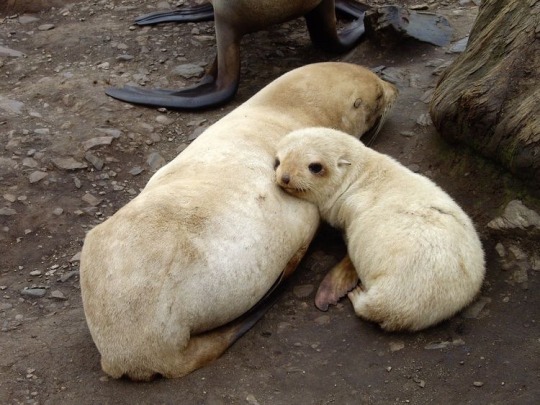#antarctic fur seal
Text
Today's Seal Is: Peeking So Nicely

11K notes
·
View notes
Note
Begging you for some pinnipeds any pinnipeds please
Piebald Northern fur seal
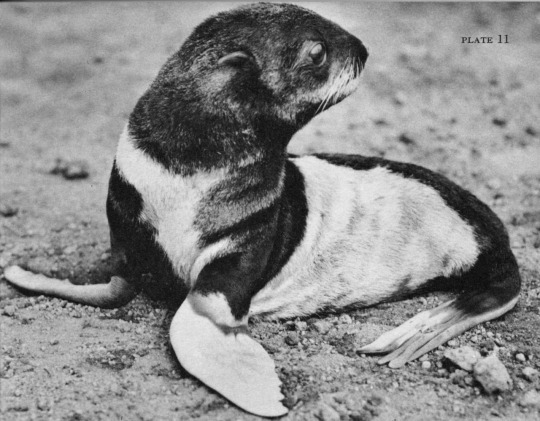
Atypical colored Antarctic fur seal! With the orange, white, and grey they look calico.
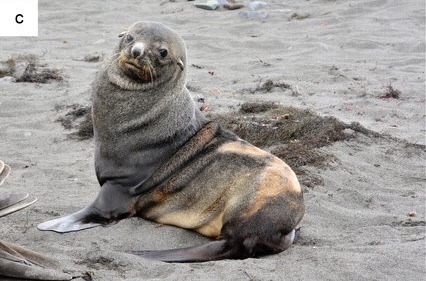
Leucistic Antarctic fur seal

Interesting gang of Antarctic fur seal, one is leucistic and one almost looks brindle?

Leucistic southern elephant seal

Northern fur seal labeled as albino and partial albino (leucistic?) by some sources. NOAA says albino and they are experts.

Albino harbor seal
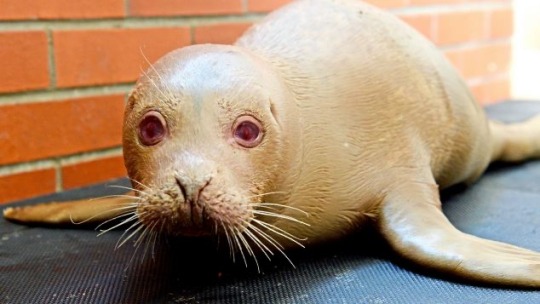
Albino ringed seal
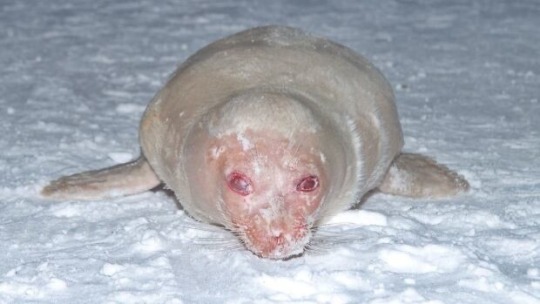
Melanistic grey seal
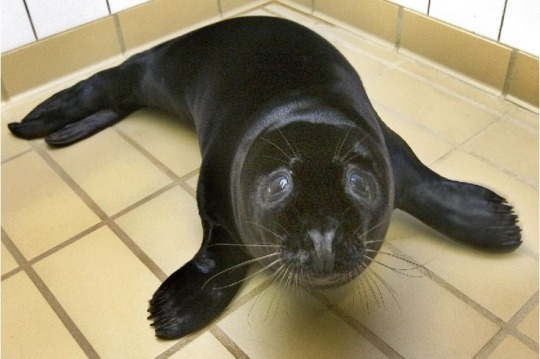
#color mutation#albino#albanisim#melanistic#melanism#piebald#leucism#leucistic#oddball#northern fur seal#Callorhinus ursinus#antarctic fur seal#Arctocephalus gazella#harbor seal#Phoca vitulina#ringed seal#Pusa hispida#southern elephant seal#Mirounga leonina#grey seal#Halichoerus grypus#ask
626 notes
·
View notes
Text
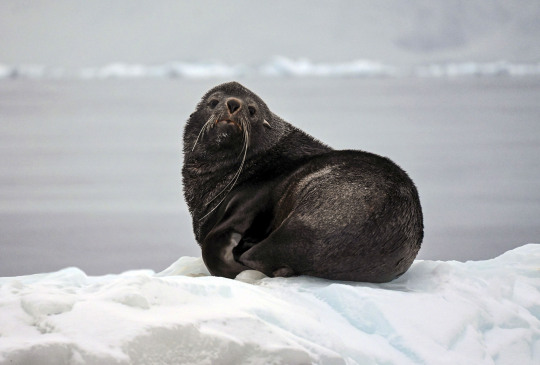
Antarctic fur seal rests along Antarctic Peninsula
Credit: Photo by Dan Costa
50 notes
·
View notes
Photo
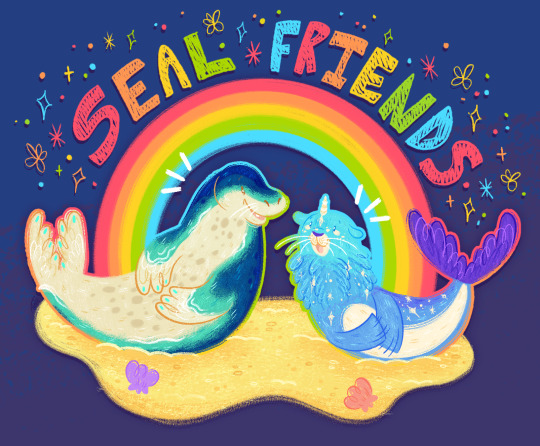
Seal friends 🦭🌈✨
63 notes
·
View notes
Text
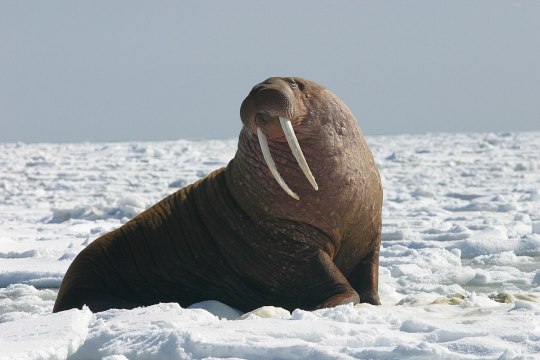

Walrus (L) – the last of the odobenidae, the mighty walrus needs no introduction. They live in the Arctic Circle, with two different populations in the Atlantic and Pacific. Their horny hide and long tusks make them fearsome opponents, and they can kill attacking polar bears. They love to eat bivalves such as clams, levering them out of the sea bed with their tusks and sucking the flesh out.
Antarctic fur seal (R) – this delicate otariid has a longer neck and pointier nose than its cousins as well as particularly long vibrasii (whiskers). Like many fur seals they were nearly hunted to extinction in the 19th century but a few colonies survived and have slowly recovered, with most of the population living on King George Island. One of their main predators is also a pinniped (the leopard seal).
#walrus#antarctic fur seal#fur seal#pinniped#pinnipeds#marine mammals#tumblr pinniped contest#round 1
25 notes
·
View notes
Text
Antarctica Dream Adventure 6 - Grytviken, Old Whaling Station
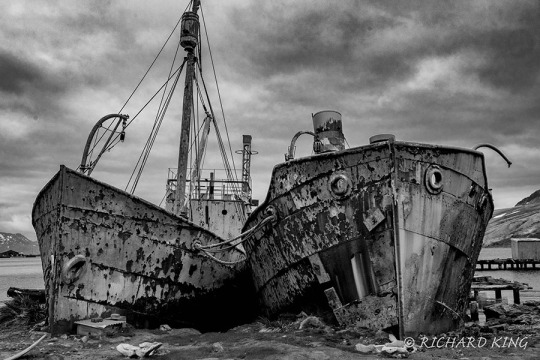
View On WordPress
#Antarctic Shag#Antarctica Dream Adventure#Antarctica Expedition#British Overseas Territory#Capital of Territory#Ernest Shackleton&039;s Grave#Finest Natural Harbour in South Georgia#Frank Wild&039;s Grave#Fur Seals#Grytviken#Grytviken Church#James Caird Replica#King Edward Point#King Penguins#NIK 6 Silver Efex#Nikkor Z 100-400mm f/4.5-5.6 VR S#Nikkor Z TC-1.4x#Nikon Z 8#Old Whaling Station#Reindeer#Richard King Photography#Sir Ernest Shakleton#South Atlantic Ocean#South Georgia and the South Sandwich Islands#South Georgia Island#South Georgia Island and Antarctica Expedition#Wildlife of South Georgia#www.fulltimervingwiththekings.com#www.mothernatureimages.com#www.richardkingphoto.com
1 note
·
View note
Text

eric andre voice what if it was pinnipeds
(grian antarctic fur seal, scar a california sea lion and mumbo a bearded seal :) )
229 notes
·
View notes
Text
I would like to offer this resource for therians, an extensive list of all of Sir David Attenborough’s nature documentaries that are available on soap2day, and a full list of what species* they each (notably, prominently) feature the natural behaviors of, separated by episode, and omitting species that were only shown dead, juvenile or being predated on. This took me a while (I have been working on it since Prehistoric Planet’s release) because I did in fact have to watch every single series in full in order to list all the species and the episodes are around 50 minutes long, but enjoy.
Long post ahead:
Most of these shows have closed captioning, which is why I’ve picked soap2day. Planet Earth is the only one that doesn’t. I did not include Dynasties and Dynasties II because each episode only features one species.
Thank you to Birch (@ambiguousmutt) for his help (he watched about half of the episodes) so I didn’t have to do it individually. Credit goes to him as well.
*Sometimes Attenborough doesn’t say the specific species and I was too busy trying to get through the episodes to identify it. In those cases I just put the most specific name I could.
Planet Earth
Episode one (From Pole to Pole): emperor penguin, polar bear, caribou, arctic grey wolf, Amur leopard, six-plumed bird-of-paradise, superb bird-of-paradise, great white shark, African elephant, African buffalo, lechwe, baboon, African wild dog
Episode two (Mountains): gelada, walia ibex, Ethiopian wolf, guanaco, cougar, grizzly bear, markhor, snow leopard, golden eagle, grey wolf, panda, golden snub-nosed monkey, red panda, demoiselle crane
Episode three (Fresh Water): giant salamander, grizzly bear, smooth-coated otter, Nile crocodile, dolphin fish, midge, Amazon river dolphin, dorado, piranha, spectacled caiman, crab-eating macaque, snow goose
Episode four (Caves): wrinkle-lipped free-tailed bat, cockroach, bat hawk, cave swiftlet, yellow-red rat snake, Texas blind salamander
Episode five (Deserts): Bactrian camel, dromedary camel, red kangaroo, fennec fox, guanaco, long-nosed bat, Nubian ibex, flat lizard, lion, African elephant, locust
Episode six (Ice Worlds): snow petrel, Antarctic petrel, south polar skua, humpback whale, emperor penguin, eider, muskox, arctic grey wolf, polar bear, little auk, arctic fox
Episode seven (Great Plains): Mongolian gazelle, red-billed quelea, wildebeest, snow goose, arctic fox, arctic grey wolf, bison, wild ass, Tibetan fox, pygmy hog, African elephant, lion, baboon
Episode eight (Jungles): magnificent bird-of-paradise, spider monkey, howler monkey, siamang gibbon, gliding tree frog, colugo, red crab spider, African elephant, chimpanzee
Episode nine (The Shallow Seas): humpback whale, multiple corals, banded sea krait, trevally, dugong, bottlenose dolphin, Socotra cormorant, salp, comb jelly, sea lion, dusky dolphin, sea urchin, sunflower starfish, short-tailed stingray, great white shark, king penguin, fur seal
Episode ten (Seasonal Forests): Eurasian lynx, moose, crossbill, wolverine, western capercaillie, pine marten, great grey owl, pudu, kodkod, mandarin duck, cicada, red deer, Amur leopard, tiger, mouse lemur
Episode eleven (Ocean Deep): whale shark, oceanic whitetip shark, common dolphin, Cory's shearwater, manta ray, sea spider, vampire squid, spider crab, unnamed deep sea eel, giant isopod, chambered nautilus, Pacific spotted dolphin, mola mola, frigatebird, sailfish, blue whale
Planet Earth II
Episode one (Islands): pygmy three-toed sloth, Komodo dragon, sifaka, marine iguana, Galapagos racer, Buller's albatross, fairy tern, Christmas Island red crab, yellow crazy ant, chinstrap penguin
Episode two (Mountains): Nubian ibex, red fox, golden eagle, grizzly bear, bobcat, flamingo, mountain viscacha rat, snow leopard
Episode three (Jungles): spider monkey, flying lizard, sword-billed hummingbird, river dolphin, jaguar, glass frog, paper wasp, click beetle, red bird of paradise, Wilson's bird of paradise, indri
Episode four (Deserts): lion, Harris's hawk, shrike, locust, sand grouse, pale chanting goshawk, feral mustang, golden mole, desert long-eared bat, darkling beetle, Namaqua chameleon
Episode five (Grasslands): saiga antelope, lion, harvest mouse, carmine bee-eater, Kori bustard, African elephant, serval, Jackson's widowbird, grasscutter ant, compass termite, giant anteater, bison, red fox, arctic grey wolf
Episode six (Cities): langur, peregrine falcon, leopard, European starling, great bowerbird, raccoon, rhesus macaque, spotted hyena, wels catfish
Our Planet
Episode one (One Planet): lesser flamingo, orchid bee, golden-collared manakin, red-capped manakin, blue manakin, cormorant, booby, common dolphin, shearwater, African wild dog, timber wolf
Episode two (Frozen Worlds): gentoo penguin, wandering albatross, narwhal, Pacific walrus, humpback whale, orca, leopard seal, polar bear
Episode three (Jungles): lowland gorilla, forest elephant, black sicklebill, twelve-wired bird-of-paradise, western parotia, mountain treeshrew, Philippine eagle, black spider monkey, leafcutter ant, Sumatra orangutan, velvet worm
Episode four (Coastal Seas): northern fur seal, compass jellyfish, giant trevally, mobula ray, Atlantic stingray, bottlenose dolphin, grey reef shark, whitetip reef shark, sea otter, California sheephead wrasse, Steller's sea lion, bald eagle, humpback whale, Guanay cormorant, Inca tern, Peruvian booby, South American sea lion
Episode five (From Deserts to Grasslands): Socotran cormorant, Arabian leopard, Arabian oryx, African elephant, cheetah, bison, Alcon blue butterfly, saiga, Przewalski's wild horse, tiger
Episode six (The High Seas): blue whale, spinner dolphin, mobula ray, oarfish, anglerfish, bristle worm, giant petrel, black-browed albatross, wandering albatross, bluefin tuna, sea lion, humpback whale
Episode seven (Fresh Water): Australian pelican, torrent duck, grizzly bear, manatee, giant mayfly, common kingfisher, osprey, jaguar, callipterus cichlid, Siamese fighting fish, hippopotamus, lion, African elephant, sandhill crane
Episode eight (Forests): Siberian tiger, bald eagle, rough-skinned newt, great hornbill, African elephant, African wild dog, fossa, gray mouse lemur
A Perfect Planet
Episode one (Volcano): lesser flamingo, marabou stork, Galápagos land iguana, vampire ground finch, Aldabra giant tortoise, North American river otter, coyote, Kamchatka brown bear, wildebeest
Episode two (The Sun): yellow-cheeked gibbon, fig wasp, arctic grey wolf, wood frog, garter snake, arctic fox, Saharan silver ant, golden snub-nosed monkey, sooty shearwater, humpback whales
Episode three (Weather): straw-colored fruit bat, fire ant, Amazonian giant river turtle, desert rain frog, Bactrian camel, Christmas Island red crab, carmine bee-eater, Nile crocodile, African fish eagle, hippopotamus
Episode four (Oceans): common dolphin, marine iguana, flightless cormorant, flamboyant cuttlefish, eider, bottlenose dolphin, lemon shark, manta ray, blacktip reef shark, trevally, rockhopper pengin, Eden's whale
Episode five (Humans): none
Life
Episode one (Challenges of Life): bottlenose dolphins, cheetah, panther chameleon, orca, brown-tufted capuchin, stalk-eyed fly, hippopotamus, Clark's grebe, giant Pacific octopus, strawberry poison-dart frog, leopard seal, orangutan
Episode two (Reptiles and Amphibians): pebble toad, caiman, basilisk, Brazilian pygmy gecko, panther chameleon, Namaqua chameleon, red-sided garter snake, collared iguana, hog-nosed snake, horned lizard, sea krait, African bullfrog, Komodo dragon
Episode three (Mammals): Weddell seal, elephant shrew, aye-aye, caribou, straw-colored fruit bat, lion, spotted hyena, polar bear, brown-nosed coati, meerkat, African elephant, humpback whale
Episode four (Fish): sailfish, flying fish, weedy sea dragon, convict fish, sarcastic fringehead, mudskipper, Hawaiian freshwater goby, hippopotamus, barbel, silvertip shark, clownfish, sea lion, ragged tooth shark, multiple snapper, whale shark
Episode five (Birds): spatuletail hummingbird, lammergeier, red-billed tropicbird, magnificent frigatebird, red knot, horseshoe crab, lesser flamingo, chinstrap penguin, great white pelican, Clark’s grebe, sage grouse, Vogelkop bowerbird
Episode six (Insects): Darwin’s beetle, unnamed damselfly, monarch butterfly, alkali fly, Wilson’s phalarope, oogpister beetle, mongoose, bombardier beetle, honey bee, black bear, Japanese red bug, Dawson’s bee, grass cutter ant
Episode seven (Hunters and Hunted): ibex, short-tailed stoat, brown bear, Ethiopian wolf, California ground squirrel, star-nosed mole, cheetah, red fox, greater bulldog bat, bottlenose dolphin, Bengal tiger, rattlesnake, orca
Episode eight (Creatures of the Deep): Pompeii worm, Humboldt squid, nemertean worm, moon jelly, fried egg jellyfish, spider crab, stingray, cuttlefish, giant Pacific octopus, sunflower sea star, king crab, cleaner shrimp
Episode nine (Plants): monarch butterfly, purple-throated carib hummingbird
Episode ten (Primates): Hamadryas baboon, Japanese macaque, lowland gorilla, spectral tarsier, phayre's leaf monkey, ring-tailed lemur, Sumatra orangutan, chacma baboon, white-faced capuchin, brown-tufted capuchin, western chimpanzee
Blue Planet II
Episode one (One Ocean): bottlenose dolphin, tuskfish, tern, giant trevally, mobula ray, false killer whale, Asian sheepshead wrasse, orca, humpback whale, walrus
Episode two (The Deep): sea toad, Venus’ flower basket, unnamed shrimp, ethereal snailfish, cock-eyed squid, pyrosome, barrel-eyed fish, unnamed siphonophore, yeti crab, Humboldt squid, fangtooth fish, sixgill shark, scabbardfish, zombie worm
Episode three (Coral Reefs): broadclub cuttlefish, coral grouper, day octopus, multiple corals, green turtle, bottlenose dolphin, manta ray, bobbit worm, saddleback clownfish, marbled grouper, grey reef shark
Episode four (Big Blue): spinner dolphin, yellowfin tuna, mobula ray, sailfish, sperm whale, sea turtle, blue shark, great white shark, multiple jellyfish, Portuguese man o' war, whale shark, wandering albatross, shortfin pilot whale
Episode five (Green Seas): Garibaldi, Australian giant cuttlefish, weedy seadragon, common octopus, pyjama shark, sea otter, tiger shark, smooth stingray, zebra mantis shrimp, common dolphin, humpback whale
Episode six (Coasts): Pacific leaping blenny, king penguin, southern elephant seal, Sally Lightfoot crab, Galápagos sea lion, ochre starfish, clingfish, chain moray eel, Atlantic puffin, arctic skua
Episode seven (Our Blue Planet): none
Prehistoric Planet
Episode one (Coasts): Tyrannosaurus rex, Tethydraco, Phosphatodraco, Tuarangisaurus, Mosasaurus hoffmannii, pycnodont fish, ammonites, Kaikaifilu
Episode two (Deserts): Dreadnoughtus, Tarbosaurus, Velociraptor, Mononykus, Barbaridactylus, Secernosaurus
Episode three (Freshwater): Velociraptor, Tyrannosaurus rex, Deinocheirus, Quetzalcoatlus, Masiakasaurus, Beelzebufo, elasmosaur
Episode four (Ice Worlds): dromaeosaur, hadrosaur, Ornithomimus, Olorotitan, troodontid, Antarctopelta, Pachyrhinosaurus, Nanuqsaurus
Episode five (Forests): Austroposeidon, Triceratops, Carnotaurus, Qianzhousaurus, Edmontosaurus, Atrociraptor, Anodontosaurus, Therizinosaurus, Telmatosaurus, Hatzegopteryx
The Hunt
Episode one (The Hardest Challenge): African leopard, African wild dog, Parson’s chameleon, nose-horned chameleon, African mantis, Darwin’s bark spider, Nile crocodile, Amur falcon, orca, cheetah
Episode two (Arctic): polar bear, arctic grey wolf, arctic fox, glaucous gull
Episode three (Forests): tiger, American marten, sparrow hawk, Portia spider, tarsier, harpy eagle, chimpanzee, army ant
Episode four (Oceans): blue whale, frigatebird, dorado, sargassum fish, spinner dolphin, Beroe ovata, Chiroteuthis, lionfish, black-browed albatross, sea lion, tuna, copper shark, common dolphin, Bryde's whale
Episode five (Plains): cheetah, caracal, honey badger, termite, bald eagle, lion, Ethiopian wolf, hotrod ant, spoor spider
Episode six (Coasts): bottlenose dolphin, algae octopus, sand bubbler crab, long-tailed macaque, marine otter, grizzly bear, grey wolf, peregrine falcon, orca, humpback whale
Episode seven (Conservation): none
Life In Colour
Episode one (Seeing In Color): Indian peafowl, mandrill, Costa’s hummingbird, magnificent bird-of-paradise, blue moon butterfly, fiddler crab, mantis shrimp, flamingo, poison dart frog
Episode two (Hiding In Color): Bengal tiger, langur, ptarmigan, crab spider, zebra, Cuban painted snail, blue-striped fangblenny, common waxbill, pin-tailed wydah, Augrabies flat lizard
Frozen Planet II
Episode one (Frozen Worlds): emperor penguin, orca, Pallas’s cat, Siberian tiger, grizzly bear, hooded seal, polar bear
Episode two (Frozen Ocean): polar bear, beluga, harp seal, skeleton shrimp, crested auklet, orca
Episode three (Frozen Peaks): high-casqued chameleon, japanese macaque, kea, andean flamingo, giant panda, golden eagle, andean mountain lion
Episode four (Frozen South): king penguin, Antipodean wandering albatross, blue whale, Weddell seal, chinstrap penguin, snow petrel, leopard seal, orca
Episode five (Frozen Lands): grey wolf, arctic fox, Amur leopard, Siberian tiger, painted turtl, Lapland bumblebee, snowy owl, caribou, grizzly bear
Episode six (Our Frozen Planet): none
Africa
Episode one (Kalahari): fork-tailed drongo, ostrich, black rhinoceros, Angolan giraffe, African leopard, armored ground cricket, spider wasp
Episode two (Savannah): Agama lizard, shoebill, bee-eaters and rollers, lesser flamingo, African elephant, crowned eagle, African fish eagle, martial eagle
Episode three (Congo): chimpanzee, central African rock python, Angola banana frog, African skimmer, rockfowl, African elephant
Episode four (Cape): emperor swallowtail, giant kingfish, African penguin, monkey beetle, springbok, yellow-billed kite, pied crow, ghost crab, vundu catfish, Nile crocodile, Bryde’s whale, great white shark, common dolphin
Episode five (Sahara): Grevy’s zebra, naked mole rat, barn swallow, Dromedary camel, dung beetle, crocodile, western yellow wagtail, Saharan silver ant
Episode six (The Future): none
521 notes
·
View notes
Text
Harbor seal
Grey seal
Ringed seal
Spotted seal
Caspian seal
Baikal seal
Hawaiian monk seal
Mediterranean monk seal
Monk seal
Ribbon seal
Hooded seal
Harp seal
Bearded seal
Crabeater seal
Leopard seal
Ross seal
Weddell seal
Elephant seal
Southern elephant seal
Northern elephant seal
Antarctic fur seal
Guadalupe fur seal
Juan Fernandez fur seal
Galapagos fur seal
New Zealand fur seal
Australian sea lion
New Zealand seal lion
Subantarctic fur seal
Brown fur seal
South American sea lion
California sea lion
Galapagos sea lion
Stellar sea lion
Northern fur seal
South american fur seal
Atlantic walrus
Pacific walrus
#seal#pinniped#sealposting#baikal seal#sea lion#walrus#tusk#fur seal#elephant seal#ribbon seal#harbor seal#a lot of seals
43 notes
·
View notes
Note

baby appear.
Today's Seal Is: Baby Appear
3K notes
·
View notes
Photo




Crowning the King Penguin
The second largest species of penguin in the world, the king penguin (Aptenodytes patagonicus) is found along the southern coasts of South America and Australia, as well as islands surrounding Antarctica. They thrive mainly along sparsely vegetated coasts and on the wide ice sheets that surround the Antarctic continent in the winter. They can endure temperatures of up to -10°C and swim in temperatures frequently below freezing.
The king penguin is among the largest penguins, about a meter at its tallest and weighing up to 18kg; generally females are slightly smaller than males. They look very similar to their larger relative the emperor penguin (Aptenodytes forsteri): both sport a dark grey or black head with yellow patches on the sides and throat, a dark back, and a white belly. However, the king penguin is more brightly coloured than the emporer penguin, and has a longer bill. Young penguins have an entirely brown coat, and only grow their adult feathers after several molts.
The primary food source for A. patagonicus are cephalopods and small fish, supplemented by krill and other marine invertebrates. Although they usually hunt in the upper water column for such prey, they regularly dive down to depths of over 200m. To find hunting grounds, king penguins can travel up to 500km from their colony. Year-round predators include fur seals, leopard seals and killer whales, and in the summer birds can snatch eggs and hatchlings.
Though king penguins have no formal social structure, they are highly social creatures. Groups of anywhere from a dozen to a hundred individuals travel together between seasons, hunt together, and frequently call to each other. Colonies themselves can easily number in the tens of thousands. King penguins also serially monogamous; they stay with one mate throughout a breeding season, and the next season both mates choose whether to return to their nest or search for a better mate. More often than not, pairs will stay together throughout multiple seasons, though king penguins do have lower rates of monogamy than other penguin species. King penguins also regularly exhibit homosexuality in the wild, with one study finding over a quarter of pairs in a colony were between same-sex individuals.
King penguins are one of only two species of penguin that do not build nests. At the beginning of the mating season, in spring, single males perform loud displays, throwing their head and wings back and puffing out their chests. The female chooses a mate, and the two perform a short dance, after which they molt together for a month. Shortly after, the female lays one egg. This eggs incubates for about 54 days, cared for and carried in a special pouch by both parents. and the ensuing chick is looked after and fed for another 14 to 16 months. During that time, parents take turns hunting for food at sea, and groups of chicks can form a crèche which is looked after by another, unrelated adult. At almost two years old, chicks become fully independent, though they do not mature sexually until 3-5 years of age. King penguins can live up to 25 years in the wild.
Conservation status: The IUCN has rated the king penguin as Least Concern. However, shrinking ice sheets have reduced feeding grounds and breeding colonies, and large reductions in the population are expected in the future.
Photos
Kimberly Kliska
Kerry Steinberner
Carl Henry
Tom Brakefield
#king penguin#Sphenisciformes#Spheniscidae#great penguins#penguins#birds#marine fauna#marine birds#islands#island birds#coasts#coastal birds#open ocean#open ocean birds#pelagic fauna#pelagic birds#antarctica#south america#southern south america#oceania#southern oceania#antarctic ocean#queer fauna#animal facts#biology#zoology
404 notes
·
View notes
Photo
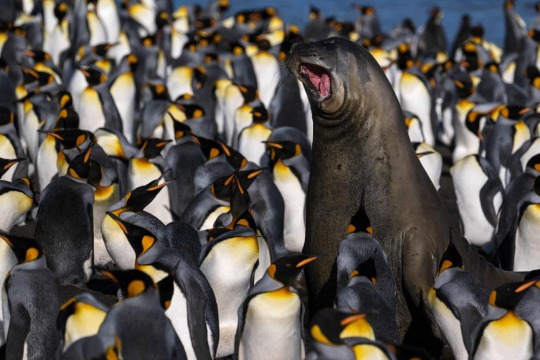
An elephant seal is surrounded by penguins (Manchots Royaux), on Desolation Island, part of the Crozet Islands, a sub-Antarctic archipelago of small islands in the southern Indian Ocean. The Crozet Islands are home to four species of penguins. Most abundant are the macaroni penguin, of which some 2 million pairs breed on the islands, and the king penguin, home to 700,000 breeding pairs; half the world’s population. Mammals living on the Crozet Islands include fur seals and southern elephant seals. Killer whales have been observed preying upon the seals
Photograph: Patrick Hertzog/AFP/Getty Images
#patrick hertzog#photographer#afp via getty images#elephant seal#seal#animal#mammal#wildlife#penguins#manchots royaux#desolation island#crozet islands#indian ocean
87 notes
·
View notes
Text
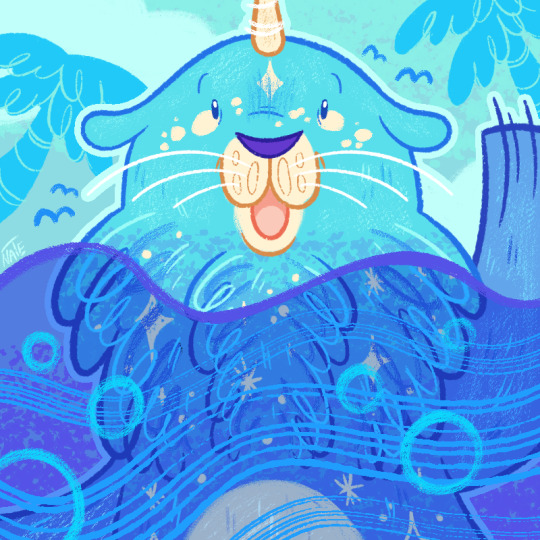
Playing around more with the symmetry tool!
4 notes
·
View notes
Text


That's right followers, the Tumblr Pinniped Contest is here! 34 extant species, a randomly generated bracket, and a contest for the ages. Only one will wear the crown of Tumblr's favorite pinniped! Polls will be posted every day (approximately, be nice I'm on painkillers).
As you can see because we don't have an easily divisible number of species we will be starting out with a mini round.
Round 1:
Walrus vs Antarctic fur seal
Brown fur seal vs Galapagos fur seal
New Zealand fur seal vs Guadalupe fur seal
South American fur seal vs Subantarctic fur seal
82 notes
·
View notes
Text
Antarctica Dream Adventure 05 - Birds and Bergs en route to South Georgia Island

View On WordPress
#(Arctocephalus pusillus)#(Daption capense)#(Fulmarus glacialoides)#(Macronectes giganteus)#(Megaptera novaeangliae)#(Pachyptila desolata)#(Phoebetria palpebrata)#(Pterodroma macroptera)#(Thalassarche chrysostoma)#(Thalassarche melnophris)#Antarctic Prion#Antarctica Dream Adventure#Bird Mode#birds#Black-browed Albatross#Cape Petrel#Fur Seals#Giant Petrel#Great-winged Petrel#Grey-heded Albatross#Humpback Whale#Icebergs#Light-mantled Albatross#marine mammals#South Atlantic Ocean#South Georgia Island#South Georgia Island and Antarctica Expedition#Southern Fulmar#Viking Octantis
0 notes
